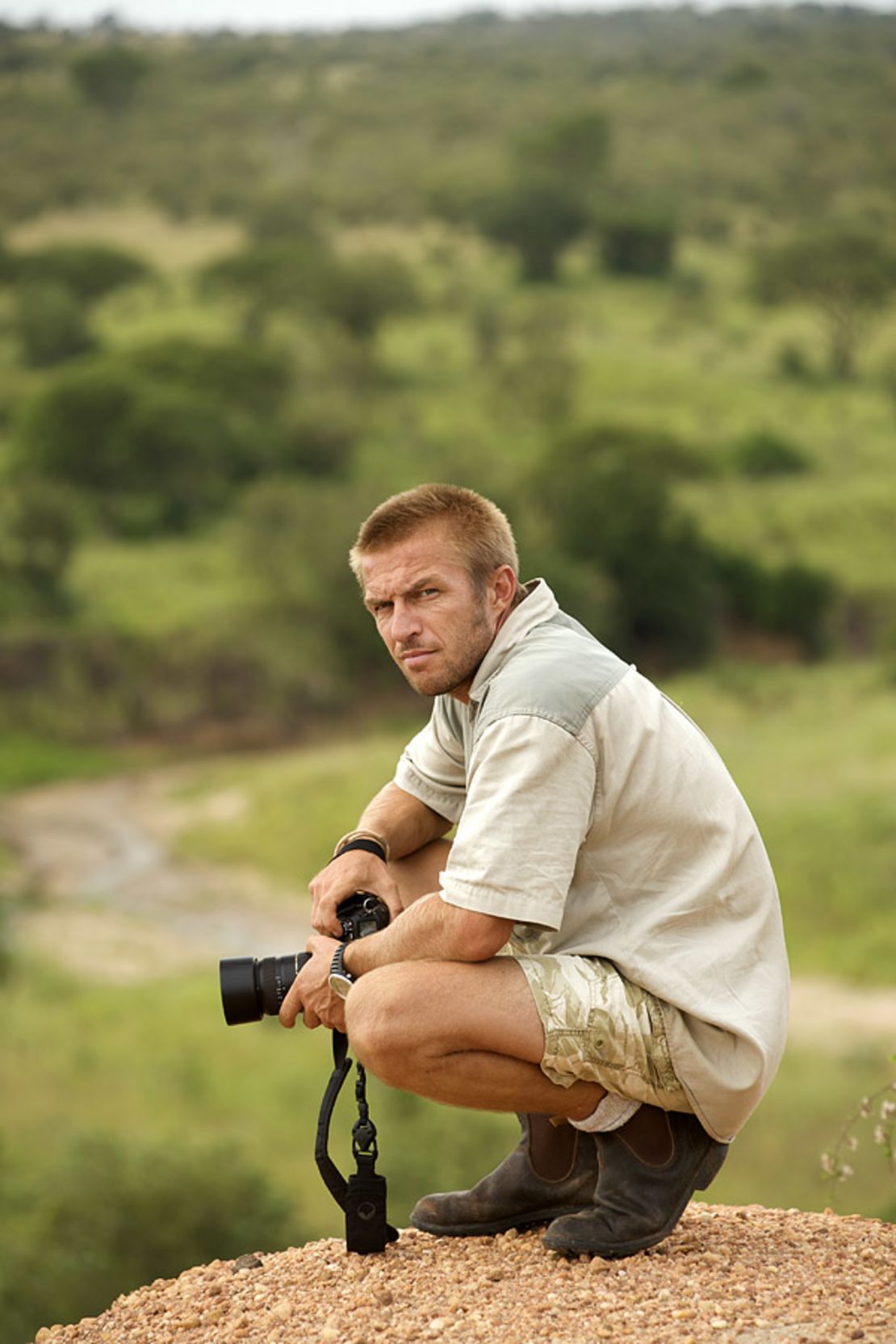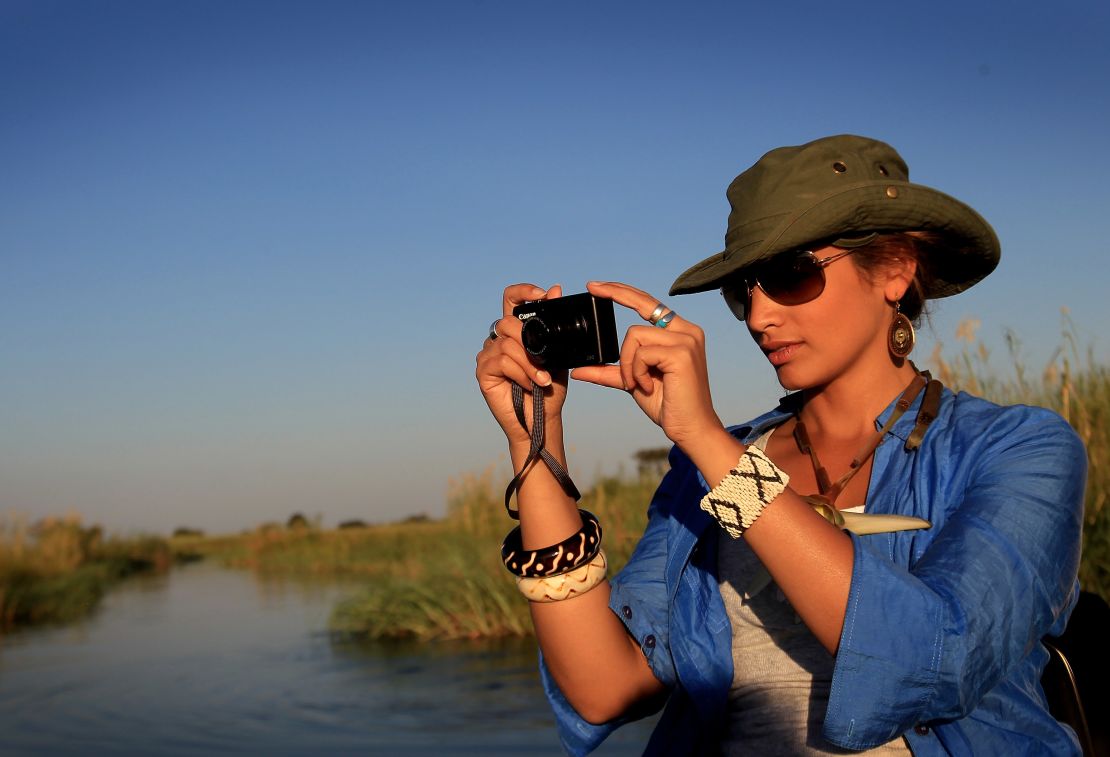Story highlights
Must-bring items: needle, shower cap, floss (not necessarily for your teeth)
Don't pop blisters: pierce a threaded needle through them instead
Cotton isn't the best option for clothing
Things you should be worrying about on an African safari – how to get better pictures of wildlife, where to pick up cool, authentic souvenirs.
Things you shouldn’t be worrying about – aching feet, dusty lenses, clothes aren’t only the wrong fabric, but the wrong color.
When it comes to safaris, the best advice comes from people who’ve learned the hard way.
We asked pros whose careers have revolved around the bush to share their most practical tips.
1. Break in the right shoes
“Bring shoes with hard rubber soles,” advises Nic van Rensburg, biodiversity manager at Lugenda Wilderness Reserve in northern Mozambique.
Having racked more walking safari miles than most, van Rensburg says thorns penetrate soft rubber easily, so hard rubber is far more suitable for bush trekking.
“Wear your shoes in for at least a month before you go on safari so you know they’re comfortable,” he says.
More: 26 of the most stunning spots in Africa
2. Treat blisters the right way
Blisters are the silent destroyer of many walking trips, but they don’t have to be.
If you get a blister, don’t pop it, says van Rensburg. That will cause the top layer of skin to rub off and leave the extremely sensitive new skin exposed.
Instead, pierce a threaded needle through one side of the blister and out the other, pulling the needle through so that only thread remains in the blister.
Then, cut the thread so that there’s a thread “whisker” on either side of the blister.
The liquid will drain out slowly via the thread, allowing time for the new skin to harden underneath.

3. Leave your black camera bag at home
Travel photojournalist Mark Eveleigh suggests taking a roll-top waterproof bag for camera equipment, to keep out dust and sand.
Color is key.
“Choose one that’s light in color, not black,” he says.
“Dark bags will heat up your equipment.”
4. Bring a shower cap
Not for your head. For additional camera protection.
It should be kept in your camera bag, along with a spare T-shirt.
“A shower cap is perfect for protecting your camera in the rain, and a T-shirt will help keep the dust off your camera when you’re driving,” says Eveleigh.

5. Bring floss
Eveleigh – who’s led expeditions through Ghana, Uganda, Panama, Borneo, Madagascar and Oman – says he never travels without floss and a needle.
As an extremely strong thread, dental floss comes in handy for stitching on buttons, repairing a daypack or even mending shoes.
The floss box is great for storing the needle.
And you can always use it on your teeth.
6. Rethink your wardrobe
“Your clothes can help you remain unseen, and in doing so increase the chance of viewing animals’ natural behavior,” says Steve Adams, a game ranger who founded online safari clothing company, The Safari Store.
White is the worst color to wear when you’re in the bush, he says, because it stands out the most to animals.
Clothing colors should be chosen based on landscape and vegetation.
“For savanna, bushveld and forest areas like many parts of Zambia, Zimbabwe, Tanzania, Mozambique and northern and eastern South Africa, wear darker green,” says van Rensburg.
“If you’re heading to drier areas like the Kalahari deserts, or Botswana, Namibia and western South Africa, then brown or khaki is more suitable.”
More: Southern Africa’s best boutique safari reserves
7. Consider going solo … for the sake of your photography
Travelers serious about taking great pictures on safari should be selective of the people they travel with.
“There’s nothing worse than feeling like you’re being hurried along by people who don’t appreciate what you are wanting to achieve with your camera,” says wildlife photographer and guide Dale Morris.
“Travel solo, join a photo safari or travel with someone who shares your passion, or at least doesn’t mind sitting around in shrubbery for hours and hours on end.”
8. Think about your bush babies
On that note, spending hours searching for animals can be torture for kids.
Parents should consider picking lodges or camps that run special programs for children.
“Samburu Intrepids in Samburu-Buffalo Springs, Kenya, has a brilliant setup for children,” says Wouter Vergeer, founder of SafariBookings.com, an online marketplace for safari tours.
“They have an adventurers’ club on the premises run by a Maasai naturalist who will entertain the young ones and educate them about nature and survival skills.”
Another destination for families is Riverdene Lodge in malaria-free Shamwari Private Game Reserve in South Africa, where a children’s coordinator entertains kids with activities between game drives.
More: 10 things to know before visiting South Africa

9. Ditch your cotton clothing
While many guidebooks say that cotton clothes are ideal for safaris, there are newer fabrics that are typically more comfortable when for sweating it out in the African bush.
“The key to a great garment is the way in which that garment reacts to your body’s cooling – and heating – processes,” says Safari Store owner Adams.
“Your body is cooled when perspiration evaporates from your skin. An all-cotton garment retains about 20% of the sweat it absorbs before allowing it to be released to the immediate environment. More technical fabrics retain much less water before it evaporates.”
Particularly recommended: clothing with labels that say “moisture-wicking,” which helps sweat leave the skin faster, keeping the body cooler.
If your clothing isn’t teched up, you can keep cool by wetting a bandana or sarong and wearing it as a scarf.
Another option is wetting a hat.









